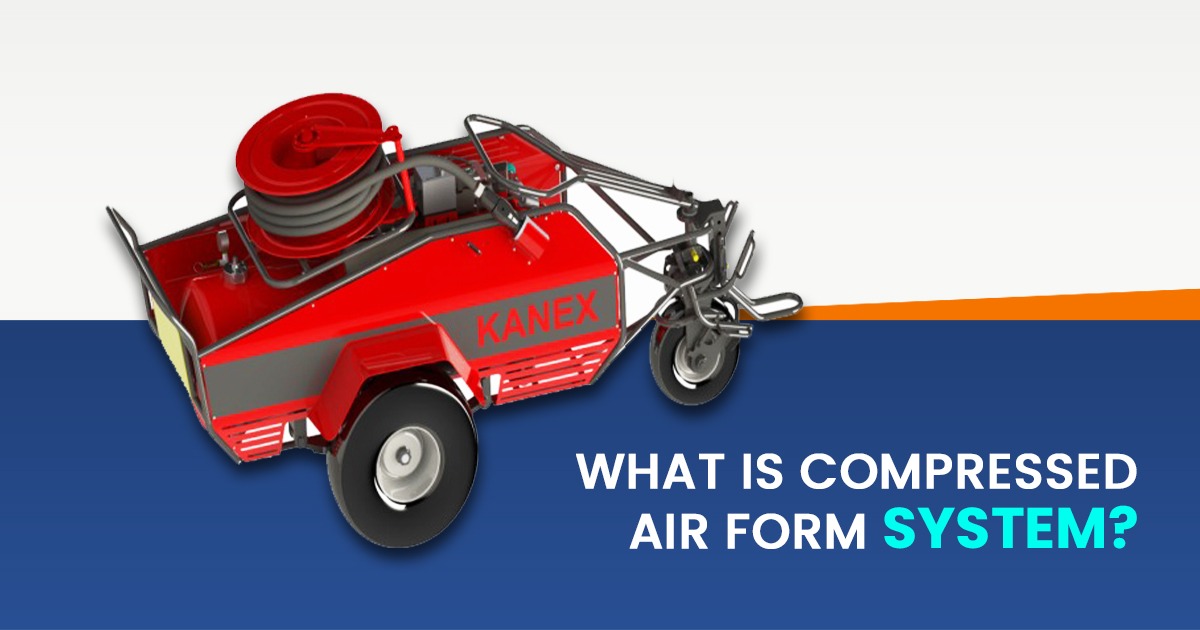What is compressed air form system?
- May 10, 2024
A water-mist cum Compressed Air Foam System (CAFS) is a firefighting system that delivers fire retardant foam to extinguish fires or protect unburned areas. It combines water, foam compounds, and compressed air to create foam, which is more effective than traditional water-based firefighting methods. In a CAFS, compressed air is added to a foam solution in a mixing chamber, actively expanding the foam. This expansion increases the foam’s surface area, allowing for better heat absorption and the ability to stick to flammable materials. As a result, CAF provides maximum cooling at the fire’s source and is more efficient than conventional firefighting foam.
KANEX CAFS – 250 LITRES
KANEX Compressed Air Foam System (250 ltrs) is a versatile product that can be used for all classes of fire with suitable multipurpose nozzle arrangement. The extinguisher acts similar to a complete firefighting system & has a long-range throw of different modes.


FEATURES:
- Suitable for direct firefighting of solid and liquid fire as well as preventative protection of objects at risk of fire through the application of CAF foam.
- Easy to operate and highly effective.
- Simple extinguishing procedure that saves extinguishing agent due to the CAF sticking to the flammable object and evaporating on the still hot surface
- Low maintenance and high reliability.
- Large safety distance between operator and flammable object as well as firefighting of fire in inaccessible places due to the excellent throw range and throw height of the CAF foam.
- Better extinguishing agent capacity for same volume of water due to active foam expansion Jet& Spray Mode technology for long range & denser foam structure.
Why CAFS is recommended over conventional water/foam-type extinguishers?
Water is an effective extinguishing agent due to its high thermal inertia and latent heat of vaporization, allowing it to absorb more heat per unit mass than many other substances. However, water’s ability to extinguish fires is limited by its high surface tension, which hinders its penetration into substances such as cloth and upholstery. Additionally, only a small percentage of the water used in firefighting actually contributes to extinguishing the fire.
Firefighting foams are used to suppress fires through two main mechanisms: cooling and smothering. The cooling effect is achieved through the evaporation of water from the foam, which absorbs heat. The smothering effect occurs when the foam forms a layer that insulates the fuel, preventing its contact with oxygen.
APPLICATIONS
Forest & Agriculture: CAFS trolleys are utilized in wildfire situations to establish firebreaks or suppress spot fires, offering supplementary assistance to ground teams and aerial firefighting operations.

Hazardous Materials Storage: CAFS trolleys can be used to mitigate fires involving hazardous materials, providing a safe and effective means of suppression.

Industrial Facilities: CAFS trolleys are appropriate for deployment in industrial settings, where they can promptly extinguish fires related to flammable liquids, gases, or electrical equipment.

Mining area: Compressed Air Foam Systems (CAFS) are utilized in various capacities within the mining sector, predominantly for the purposes of fire suppression and dust control.

Petroleum Industries & Refinery: CAFS are highly effective for suppressing fires in petroleum and refinery facilities, including those involving flammable liquids, gases, and equipment. The foam blanket created by CAFS helps smother the fire, cutting off its oxygen supply and preventing reignition.







